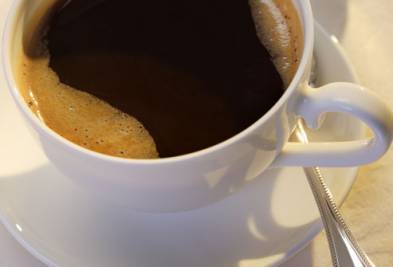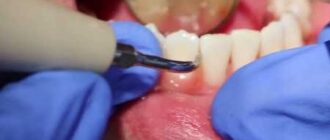Coffee, while beloved by millions for its rich taste and energizing properties, is infamous for staining teeth. Over time, frequent coffee consumption can lead to noticeable discoloration, leaving teeth looking yellow or brown. This article dives into effective methods for removing coffee stains, including both home remedies and professional treatments, to help you regain a brighter smile.
Why Does Coffee Stain Your Teeth?
The reason coffee stains teeth comes down to its composition. Coffee contains tannins, a type of polyphenol that breaks down in water. Tannins have a high affinity for enamel—the hard, outer layer of teeth—and cause dark pigments to adhere to the surface. Over time, these pigments build up, resulting in stains. A recent survey shows that approximately 64% of regular coffee drinkers in the United States have concerns about teeth discoloration, highlighting just how common this issue is.
Home Remedies for Coffee Stain Removal
For those looking to remove coffee stains at home, several effective remedies are worth considering. While these methods may not provide instant results, consistent use can lead to noticeable improvement over time.
| Home Remedy | Average Cost (USD) | Frequency | Effectiveness |
|---|---|---|---|
| Baking Soda and Water | $1 – $2 | 2-3 times/week | Moderate |
| Hydrogen Peroxide Mix | $3 – $5 | Once a week | High |
| Whitening Toothpaste | $5 – $10 | Daily | Moderate to High |
| Activated Charcoal | $10 – $15 | 2 times/week | Moderate |
1. Baking Soda and Water
Baking soda is a popular remedy for removing surface stains from teeth. It acts as a mild abrasive, helping to scrub away coffee stains without damaging the enamel. Mixing a teaspoon of baking soda with a few drops of water creates a paste that can be gently brushed onto teeth for 2-3 minutes.
- Effectiveness: Moderate. Works best for surface stains but may require several weeks of consistent use to see results.
- Caution: Use baking soda sparingly, as overuse can erode enamel.
2. Hydrogen Peroxide Mix
Hydrogen peroxide is a bleaching agent commonly used in oral care. When mixed with baking soda or water, it can create an effective whitening treatment. Many dentists recommend using a diluted solution (3% hydrogen peroxide) to safely remove stains.
- Effectiveness: High. Provides noticeable whitening effects when used correctly.
- Cost: Affordable, ranging from $3 to $5 for a bottle of hydrogen peroxide.
3. Whitening Toothpaste
Whitening toothpastes are formulated with mild abrasives and whitening agents that can help reduce coffee stains. While results are not as dramatic as professional whitening, these toothpastes are an easy addition to a daily routine.
- Effectiveness: Moderate to High. Works best for maintaining whiteness rather than removing deep stains.
- Cost: Typically $5 to $10 per tube, depending on the brand.
Professional Treatments for Stubborn Stains
While home remedies can help with mild discoloration, professional treatments are recommended for stubborn or deep stains. Here are some of the most effective in-office options:
| Professional Treatment | Average Cost (USD) | Duration | Effectiveness |
|---|---|---|---|
| In-Office Whitening | $300 – $600 | 1 hour | Very High |
| Laser Whitening | $500 – $1,200 | 1-2 sessions | Very High |
| Custom Whitening Trays | $150 – $400 | Multiple uses | High |
1. In-Office Whitening
In-office whitening is one of the quickest ways to achieve significant whitening results. Dentists use a peroxide-based gel with a higher concentration than over-the-counter products, which is applied to the teeth and activated with light. This method can lighten teeth by several shades in just one visit.
- Effectiveness: Very High. Especially effective for individuals with deep stains that do not respond well to at-home treatments.
- Cost: $300 – $600 per session.
2. Laser Whitening
Laser whitening is another advanced treatment that involves applying a whitening gel to the teeth and using laser light to enhance the results. This method is often preferred for those seeking dramatic, fast results.
- Effectiveness: Very High. Results are usually visible after one or two sessions.
- Cost: Typically $500 – $1,200 depending on the clinic.
Lifestyle Changes to Prevent Future Staining
Preventing coffee stains can be as important as removing them. Here are some modern trends and practical tips for reducing the impact of coffee on teeth:
- Drink Coffee Through a Straw: Using a straw can help reduce the contact between coffee and your teeth, minimizing stains.
- Rinse with Water: Rinsing your mouth with water after drinking coffee can wash away some of the staining compounds before they adhere to the enamel.
- Consider Switching to Less Pigmented Alternatives: Cold brew coffee and lighter roasts contain fewer staining agents compared to dark, hot brews.
Practical Example: A Real-World Approach
Consider a 40-year-old woman who has been drinking coffee daily for over 15 years. She noticed significant discoloration and began using a hydrogen peroxide and baking soda mix once a week while switching to a whitening toothpaste for daily use. After two months, her teeth appeared visibly brighter, and the surface stains were significantly reduced. For deeper stains, she opted for in-office whitening, which dramatically improved the color of her teeth after just one session.
Advice from Our Editorial Team
If you are struggling with coffee stains on your teeth, start by incorporating a home remedy like baking soda or hydrogen peroxide into your routine. If you do not see the desired results within a month or two, consider consulting with your dentist about professional whitening options. Keep in mind that consistency is key—maintaining a whitening routine and making small lifestyle changes can go a long way in keeping your smile bright. Avoiding habits that contribute to staining and staying proactive in your oral care will help you maintain your results over time.






